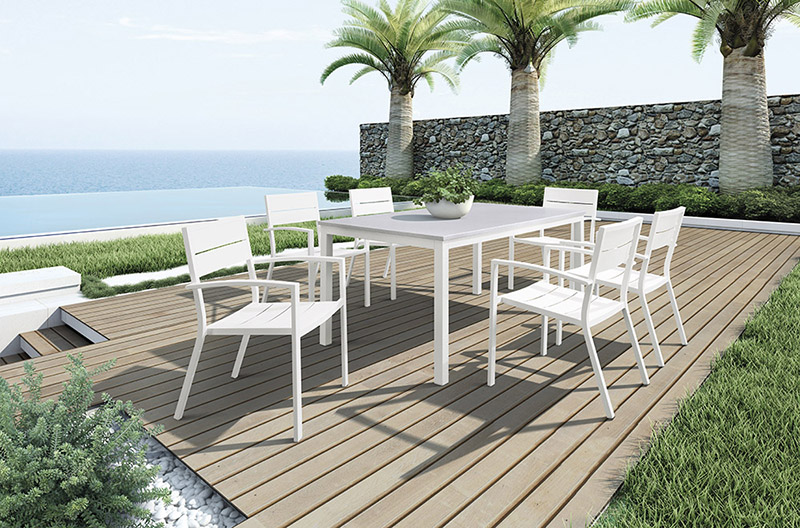Water-based ink
The main components of water-based inks are colorants, water-based binders, auxiliary solvents and auxiliary functional agents. The main difference between it and solvent ink is: the solvent used in water-based ink is water instead of organic solvent, which means that the binder of water-based ink is mainly composed of resin and water. According to the different link materials, water-based inks can be divided into three categories: water-soluble, alkali-soluble and diffusive.
(1) Water-soluble inks: The binders include polyvinyl alcohol, hydroxyethyl cellulose, and polyvinyl chlorochromone. These binders can be permanently dissolved in water, so formulated inks can only be used in applications where they are not exposed to water.
(2) Alkali-soluble ink: The binder is an alkaline solution of an acidic resin, and an appropriate amount of ammonium hydroxide is added. The soluble salt of the resin is formed after the chemical action of the two. In the drying process of the ink, the ink becomes insoluble in water after volatilization of ammonia.
(3) Diffusion ink: The binder is fine resin particles suspended in water called latex. The advantages of latex and dissolved resin are: Latex can have high density and low viscosity, can form high quality thin coating, latex can contain quite large polymer molecules, coating is hard, wear-resistant, heat-resistant, sticky Adhesion is good; the disadvantage is that printing is difficult and difficult to clean.
Its composition is:
Pigments: Organic Pigments, Inorganic Pigments Dyes: Disperse Dyes, Oil Soluble Dyes, Other Dyes Natural Vegetable Oils, Dry Oils, Semi-Dry Oils, Refining Oils, Mineral Oils Binder Resins: Natural Resins, Natural Resin Derivatives, Synthesis Resin Solvents: Hydrocarbons (Hydrocarbons), Alcohols, Ethylene Glycols, Esters, Ketones, Other Solvents Plasticizers Waxes: Natural Waxes, Synthetic Waxes Aid Desiccants
Others: Dispersants, wetting agents, crosslinking agents, anti-skinning agents, stabilizers, matting agents, defoamers, anti-precipitation agents, photosensitizers, rust inhibitors
1 Color: The color of the printing ink is formulated from pigments or dyes.
The pigments are colored in the state of microparticles, and are evenly dispersed in the binder. The dyes need to be formulated into solutions in the state of use, and they are colored in molecular state. At present, pigments are mostly used in inks.
The colorants used in printing inks require bright color and strong coloring power. Since the ink film is only a few microns thick, it is required that the color materials should have sufficient color density. In addition, depending on the purpose of use, the colorants must have different resistances. Tolerance, commonly used pigments light, water, solvent resistance.
2 link material: link material, also known as media. It is made from a small amount of natural resins, synthetic resins, fiber derivatives, and rubber derivatives dissolved in a dry oil or solvent.
The role of the binder in the ink is to evenly disperse the pigment particles, so that the ink has a certain degree of fluidity, and the ink can form a uniform thin layer after printing, and after drying, a certain strength ink film is formed. The linking material should have a film-forming effect, so that the pigment is fixed on the printing surface and the pigment is protected so that the pigment does not come off from the substrate. The linking material should have a certain viscosity, so that the ink can fully wet the substrate . In a short drying time, the raw materials used for the different types of inks are also different. See the table below:
Aluminium Garden Dining Furniture
Outdoor Aluminum Dining Furniture
Outdoor aluminum Dining furniture using at least 1.2. 1.5. 2.0 thickness aluminum frame with rush resistant powder-coated. You can choose different powder-coated color to make the aluminum dining furniture special and fit your garden or home decorate.
Secure and comfortable structure, simple design but elegance, is popular option for customer. Aluminum frame is welded and polished in meticulous style. Gently angled backs and wide arms encourage restful lounging. The industry`s best high-performing fabrics encase the thick, double-wrapped foam cushions.
Table top can be tempered glass or marble style aluminum table top.
You can choose square, rectangle dining furniture with armchair and armless chair.
Outdoor aluminum furniture with high quality and long time guaranty.

If you have any questions, please contact with us directly. Outdoor Aluminum Furniture are produced by Golden Eagle Outdoor Furniture Co.,ltd with High Quality and Good Appearance. Welcome you to visit our Factory for any inquiry, please send mail directly to us.
Wicker Aluminium Garden Dining Furniture,Patio Aluminium Garden Dining Furniture,Rattan Aluminium Garden Dining Furniture,Outdoor Aluminium Garden Dining Furniture
Golden Eagle Outdoor Furniture Co., LTD. , https://www.gerattan.com